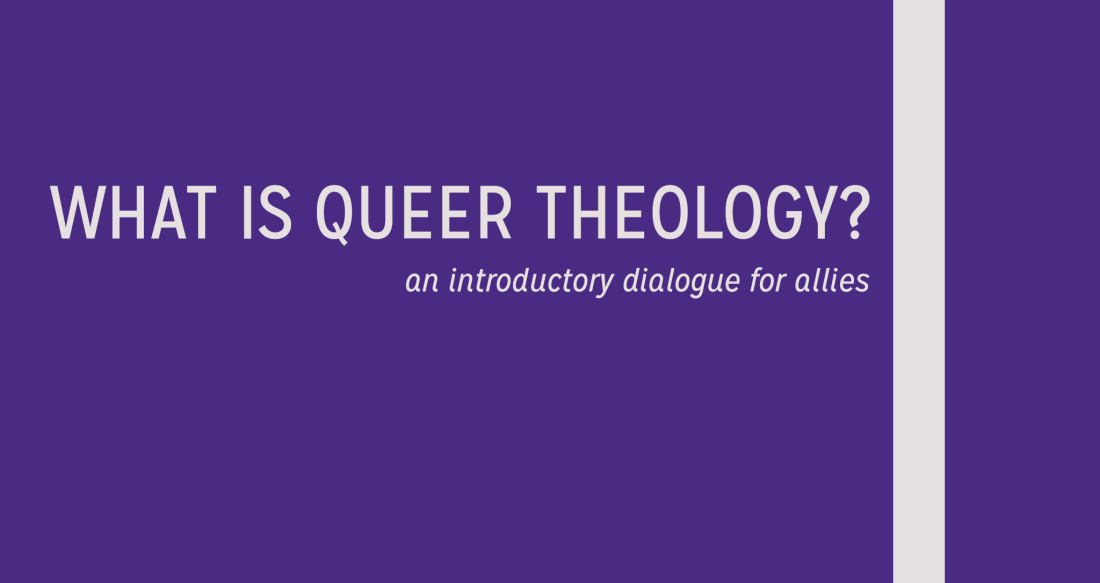
This is PART 5 of a 5 Part Series entitled, “What is Queer Theology?” These series of blog posts make up my final project for a class at the Graduate Theological Union entitled “Queering Ecclesiology and Rites,” taught by Dr. Hugo Córdova Quero, Visiting Associate Professor of Critical Theories and Queer Theologies & Director of Online Education at Starr King School for the Ministry in Berkeley. In this series I hope to explore the incredible scholarship and possibilities around queer theology in a non-academic format. These posts are intended for allies of LGBTQ+ who have a basic familiarity with Christianity, with the hope that this introductory dialogue will spark curiosity and further study amongst Christian communities.
Part 5: Queering Pentecostal Experience and Thought
I would like to take this final post as an opportunity to express my own research interests in queer theology. It has to do with my upbringing, being raised in an Assemblies of God church for all of my childhood and early adulthood. Anyone familiar with Pentecostalism understands both the emotional impact that the movement has on its followers as well as the profound sense of community that is built within the structures of church. In so many ways, Pentecostalism has such a rich history and heritage to offer those that are in it. Charismatic faith is indeed one of the most outwardly dynamic expressions of Christianity!
And yet, those who are familiar with Pentecostalism know all too well the often close-mindedness that infiltrates church leadership. The doctrines surrounding the Holy Spirit almost certainly rely on the “masculinity” of the Godhead, and the “femininity” of the believer. The idea of holiness is used as a precondition for charismatic experiences, and this holiness is almost always rooted in a laundry list of things that are not allowed for believers to do. Most recently, the politics of charismatic evangelicals have notoriously attacked the interests of people of color and immigrants, and have been largely responsible for putting leaders such as Donald Trump in power. Not to mention, the deep sense of community is countered by a horrible measure of loss when one is expelled from the church because of a doctrinal disagreement or “moral failure.”
And as such, people leave the church in droves, hurt, broken, confused, and lost. For some, this is because their sexualities are not accepted by the dogmas of Pentecostalism and those that adhere to it. For others, this is because of their solidarity for a diverse array of sexualities not being welcomed within a culture that prides itself on having found the narrow road to heaven. But for everyone who leaves the Pentecostal movement, there was a genuine moment in which the Holy Spirit did seem to descend upon the believer like a dove. For many, this is a genuine experience that was drowned out by the noise of heteronormativity.
It is my belief and hope that queer theology may have something to say about Pentecostalism, and that the experience and theological thought behind it can be challenged to the point of inclusion. Queering Pentecostal experience would look at the ways in which charismatic practices have been used to “other” those that do not participate in the practices. Queering Pentecostal thought would look at the ways in which a troubling adherence to the belief in a literal transliteration of the Bible as God’s Word harms those that cannot conform to a narrow view of righteousness. Queering Pentecostalism would challenge both the Bible and its interpreters on who gets to own the charismatic experience.
I offer this example so that allies reading this can think of the ways that they may begin to queer their theological groundings. The space of questioning Pentecostal assumptions is appropriate for me because of my background growing up in it, but for some, the appropriate space may be continuing the growing work of queering liturgical and ecclesiological rites within specific denominations of Christianity. For other allies, it may be how to queer the elevation of white male voices within dialogues of LGBTQ+ activists in the United States. For other allies, it may be prayerful support for those doing the research of queer theology across the globe. But for all, it is to stand together in the future hope that our praxis may bring others in closer relationship with themselves, their bodies, and the Divine.
Until we arrive at this, the word of the Lord:
Thanks be to God.